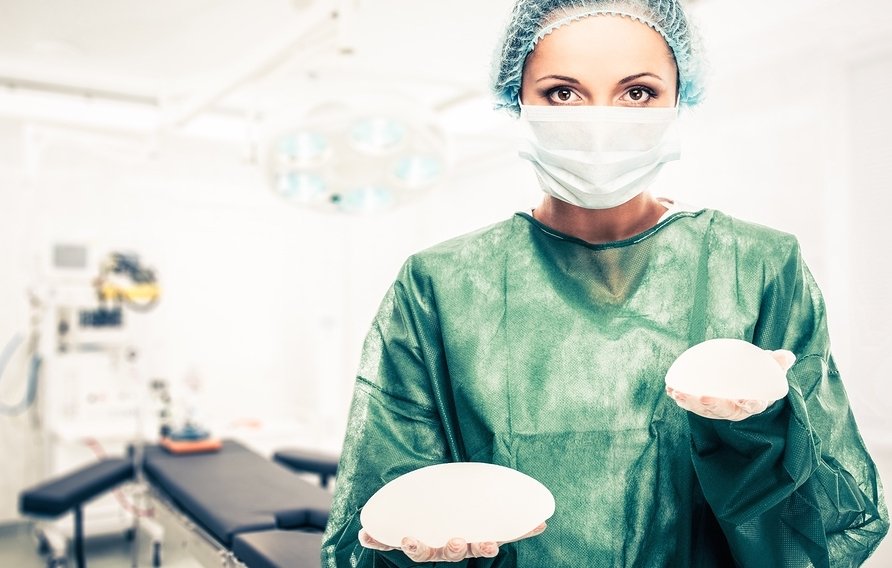We live in a very appearance-conscious world, and anything you don’t like about your body or think of as an imperfection can eat away at your self-confidence. Hence, the vast popularity of so many forms of plastic surgery. Of course, with these procedures come multiple risks including anesthesia complications, scarring, and blood clots. Yet hundreds of thousands of people sign on for them every year anyway. And now there is new evidence that for one type of cosmetic surgery, you may be putting yourself in danger of a cancer diagnosis as well.
The study, which took place at the Pennsylvania State University College of Medicine in Hershey, found that a relatively rare form of cancer that is known to be linked to breast implants may be rising in frequency.1 Leberfinger, Ashley, N.; et al. “Breast Implant-Associated Anaplastic Large Cell Lymphoma: A Systematic Review.” JAMA Surgery. 18 October 2017. Accessed 25 October 2017. http://jamanetwork.com/journals/jamasurgery/article-abstract/2657539. This disease is not breast cancer but a type of lymphoma, which is a cancer that begins in the lymphocyte cells that help the immune system fight infection. Its full name is breast implant-associated anaplastic large cell lymphoma, abbreviated to BIA-ALCL.
Based on an analysis of diagnoses of this cancer between 2010 and 2017, the researchers estimate that as many as one in every 4,000 women with implants may be affected. And while it’s true that doesn’t translate into a lot of cases (about 72 a year) even though breast augmentation was the number one cosmetic surgery in the United States in 2016, with more than 290,000 women having the procedure, that number appears to be on an upward trend.
Another important factor to consider is that BIA-ALCL was only just recognized by the Food and Drug Administration this past March as connected to breast implants. To achieve that took more than 350 reports of BIA-ALCL in women with implants, including nine deaths, from June, 2010 through February, 2017. Therefore, the investigators believe that due to a lack of knowledge of this association, BIA-ALCL may be significantly underreported.
What’s more, this disease is linked almost exclusively to one certain kind of implant. These are textured implants, which offer a slightly coarser surface than smooth implants. The rougher texted helps the implants adhere to the nearby tissue for less movement. Textured implants were not introduced until the late 1980s, and they became more popular in the 1990s. Adding to the evidence against them, the researchers could not find a single case of BIA-ALCL prior to 1997.
The data compiled for the study shows that the average time of a BIA-ALCL diagnosis is approximately 10 years after the breast implant surgery. The average age of disease onset overall was 51, but this varied quite a bit based on why the women got the implants. In subjects who elected to have a breast augmentation procedure, the average age of diagnosis was 46. In contrast, those who received implants due to a post-mastectomy breast reconstruction surgery had an average ago of diagnosis of 57.
While it still may not be a very common disease, BIA-ALCL is quite serious. A sub-type of non-Hodgkin lymphoma, it requires surgery to remove the implant and affected tissue, and sometimes chemotherapy or radiation. It’s not completely clear why textured implants contribute to this disease, but it may have to do with inflammation brought on by bacteria that mass on the surface of the textured implants. A 2016 study at Macquarie University in Sydney, Australia found that large quantities of bacteria were present on the implant capsules of BIA-ALCL patients.2 Hu, H.; et al. “Bacterial Biofilm Infection Detected in Breast Implant-Associated Anaplastic Large-Cell Lymphoma.” Plastic and Reconstructive Surgery. June 2016. Accessed 26 October 2017. http://www.ncbi.nlm.nih.gov/pubmed/26890506.
Although the risk is small, it’s still worth thinking long and hard before deciding to proceed with getting breast implants. Consider your motivations and try to focus on other things about your body that might make you feel happier and more satisfied. If you do move forward with the procedure, at least do considerable research into what you are putting into your body, and you really might want to avoid the textured implants. And if you’ve already gotten breast implants, for cosmetic or reconstruction reasons, find out whether the implants were textured if you’re not sure. If they were, alert your doctor to discuss whether prophylactic removal might be prudent. At the very least, keep watch for symptoms—including swelling or pain in a breast or a lump in a breast or armpit—to catch the lymphoma early if it occurs.
References
| ↑1 | Leberfinger, Ashley, N.; et al. “Breast Implant-Associated Anaplastic Large Cell Lymphoma: A Systematic Review.” JAMA Surgery. 18 October 2017. Accessed 25 October 2017. http://jamanetwork.com/journals/jamasurgery/article-abstract/2657539. |
|---|---|
| ↑2 | Hu, H.; et al. “Bacterial Biofilm Infection Detected in Breast Implant-Associated Anaplastic Large-Cell Lymphoma.” Plastic and Reconstructive Surgery. June 2016. Accessed 26 October 2017. http://www.ncbi.nlm.nih.gov/pubmed/26890506. |












Very interesting that
Very interesting that lymphoma appeared 10 years after breast surgery. I have heard that implants need to be changed every 10 years. A lot of women don’t do that or wait much longer. I’m a lymph drainage therapist and I work with people before and after surgery to help them heal faster and better. This is something that interests me and I’d like to hear more about. Especially since I work with women who have had breast reconstruction after cancer treatment.